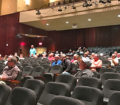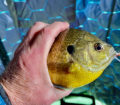By Steve Weisman
This coming month, Iowans with an interest in our natural and cultural resources have the opportunity to attend one of 18 REAP (Resource Enhancement and Protection) regional assemblies. Open to any Iowan, these regional assemblies give us all the chance to learn more about our resources and have a say in how we address the needs of these resources. It is a program in the state of Iowa that invests in, as its name implies, the enhancement and protection of the state’s natural and cultural resources.
A total of 18 REAP regional assemblies will be held during the month of October across the state. For northwest Iowa, there are two regional assemblies. The first of which is Region 3, and it involves the counties of Buena Vista, Clay, Dickinson, Emmet, Lyon, O’Brien, Osceola, Palo Alto and Sioux, our regional assembly will be held on Wednesday, October 4 at the Clay County Regional Events Center in Spencer from 6:30 p.m. to 8:00 p.m.
The second assembly is Region 4, which includes the counties of Cherokee, Ida, Monona, Plymouth and Woodbury. This assembly will held on October 25 at the Community Center in Correctionville from 6:30 p.m. to 8 p.m.
For those who have never been to a regional assembly, the REAP law requires the following things happen at each assembly:
- The DNR provides those attending with information regarding REAP expenditures. The overall REAP budget is presented and projects in the region are listed that have been funded with REAP dollars.
- People attending the assemblies shall identify opportunities for regional REAP projects. Examples that have frequently come up are trails, river corridor protection, wetland restoration, soil erosion prevention, conservation education, and resource inventories.
- People attending the assemblies shall also review and recommend changes to REAP policies, programs, and funding. This is the portion of the meeting that people speak out on anything they want regarding the inner workings of REAP.
- And last but not least, the people at the assemblies are responsible for electing five individuals to serve on the REAP Congress. In addition to the five delegates, 3-5 other people are elected as alternates to the delegates. In the event that one of the delegates cannot attend the Congress, an alternate fills that spot.
About the REAP Congress
The REAP Congress is made up of the 90 delegates elected at the regional assemblies, which occur every two years. The next REAP Congress will take place in Des Moines of January of 2018. At the Congress, delegates work on REAP policies and the inner workings of REAP including funding, fund distribution, assembly procedures and agendas, and operations of County REAP Committees. The REAP Law, Chapter 455A.17.3, states: The delegates to the congress on resources enhancement and protection shall organize, discuss, and make recommendations to the governor, the general assembly, and natural resource commission regarding issues concerning resources enhancement and protection.
The one-day Congress agenda primarily follows what the prior REAP assemblies have identified as important REAP issues. Ideally, a delegate will discuss these issues with other people in their local area to get more input. Delegates may attend some County REAP Committee meetings to receive input for use during the Congress. They may attend soil conservation district, county conservation board, city council, and historical society meetings to receive suggestions.
The work of the Congress begins on a Saturday morning and ends in mid to late afternoon on that same day. Just like the 18 assemblies, the Congress’s first order of business is to elect a chairperson from among its members. Nominations are taken from the floor and a vote is taken to determine the chairperson. With the assistance of the state departments, the chairperson is responsible for leading the Congress through its agenda.
Importance of REAP
Yes, take it from me: REAP is incredibly important to us! Here is how it is funded. REAP is funded from the state’s Environment First Fund (Iowa gaming receipts) and from the sale of the natural resource license plate. The program is authorized to receive $20 million per year until 2021, but the state legislature sets the amount of REAP funding every year. This year REAP was appropriated $12 million.
When you add license plate and interest income, its total budget is about $12.5 million. In its 28 years, REAP has benefited every county in Iowa by supporting more than 15,000 projects. REAP has funded these projects with over $330 million in state investments, leveraging two to three times the amount in private, local and federal dollars.
REAP fund allocations are spread out in this way:
The first $350,000 each year goes to Conservation Education. Another 1 percent goes for DNR administration. The remaining balance goes to the following:
- Roadside Vegetation, 3 percent;
- Historical Resources, 5 percent;
- Public Land Management, 9 percent;
- City Parks and Open Space, 15 percent;
- Soil and Water Enhancement, 20 percent;
- County Conservation, 20 percent;
- State Open Space (protecting and developing public lands and waters), 28 percent.
Based upon these
As a former board member for the Emmet County Conservation Board for several years, I can personally attest to the importance REAP funds for counties. The first 30 percent is allocated automatically and equally to all 99 counties. Another 30 percent of the county conservation account is allocated based on population. Counties with larger populations receive more money than counties with smaller populations. This money is also distributed quarterly. The remaining 40 percent of the county conservation account is available to counties through competitive grants.
So, this is your opportunity to learn more about REAP and how you can be part of a very important process. It is truly a grass roots program with important input coming from the people of Iowa.

















